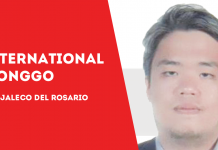 PRESIDENT Duterte’s conflicts with religious figures are well known, and this week, he was involved in a relatively minor spat with Manila Archbishop Tagle.
PRESIDENT Duterte’s conflicts with religious figures are well known, and this week, he was involved in a relatively minor spat with Manila Archbishop Tagle.
In a recent homily that didn’t mention any names, Tagle preached against disrespecting and coercing people. Reading between the lines, President Duterte shot back at Tagle by saying, “They say I shouldn’t threaten Bishop Tagle. When have I ever done that?”
President Duterte’s fights with religious leaders are fairly well-known, but the battle between church and state is nothing new. It’s a story that goes back thousands of years, to humanity’s earliest cultures.
In ancient India, the conflicts of the Brahmins and the Kshatriyas appear on various stories and epics, most notably in the story of Parashurama, a Brahmin-Kshatriya who really hated the Kshatriyas warrior caste.
In the Bible, there are the stories of the Kings of Israel and Judah, and their wars with God’s Prophets.
In Medieval Europe, the Pope fought against various European monarchs, most notably the Holy Roman Emperor.
In pre-modern Japan, secular power was given to the Shogun and his Bakufu, whereas spiritual authority, was the sole province of the Emperor/Mikado.
The point here is that the conflict between church and state has been around for thousands of years, and will likely continue for the rest of human history in one form or another. However, at the same time, it’s important to remember that church and state have broader meanings beyond their literal definitions.
The “Church” is more than just the religious body. In pre-modern societies, it also included the scholars, the philosophers, the writers and anyone else who had – what is known in modern society as – “soft power.”
Today, this group also includes journalists, academics, researchers and even celebrities. They, along with our religious leaders, make up the “church.”
In contrast, the state is easier to define. It is the monarch, the government, the military and anyone who uses “hard power.” These are the people who use lawful violence to stabilize and control society.
In other words, any conflict between the church and the state is also a conflict between soft power and hard power. If you understand this then you have understood one of the most important aspects of human politics. The elites who use weapons and martial power are often at odds with the elites who use myths and persuasions.
Based on this paradigm, we can say that Duterte’s various spats with religious leaders are manifestations of a conflict as old as human society. Duterte’s strong-man style of government emphasizes hard power, whereas his critics (usually academics, intellectuals, church persons and journalists) prefer the soft power approach.
Such inter-elite conflict usually happens during periods of great social change, when the various elites of society cannot agree on a consensus or when one group decides to hoard all the power for themselves.
When this happens, you get government officials and religious leaders dissing one another./PN

